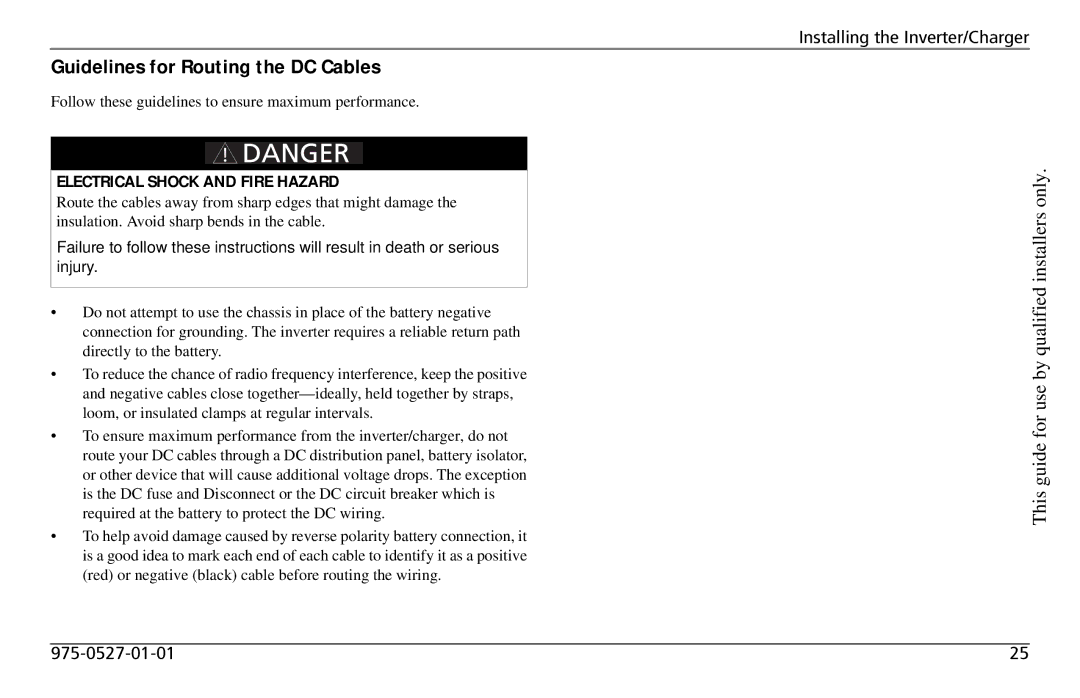
Guidelines for Routing the DC Cables
Follow these guidelines to ensure maximum performance.
ELECTRICAL SHOCK AND FIRE HAZARD
Route the cables away from sharp edges that might damage the insulation. Avoid sharp bends in the cable.
Failure to follow these instructions will result in death or serious injury.
•Do not attempt to use the chassis in place of the battery negative connection for grounding. The inverter requires a reliable return path directly to the battery.
•To reduce the chance of radio frequency interference, keep the positive and negative cables close
•To ensure maximum performance from the inverter/charger, do not route your DC cables through a DC distribution panel, battery isolator, or other device that will cause additional voltage drops. The exception is the DC fuse and Disconnect or the DC circuit breaker which is required at the battery to protect the DC wiring.
•To help avoid damage caused by reverse polarity battery connection, it is a good idea to mark each end of each cable to identify it as a positive (red) or negative (black) cable before routing the wiring.
Installing the Inverter/Charger
This guide for use by qualified installers only.
25 |
